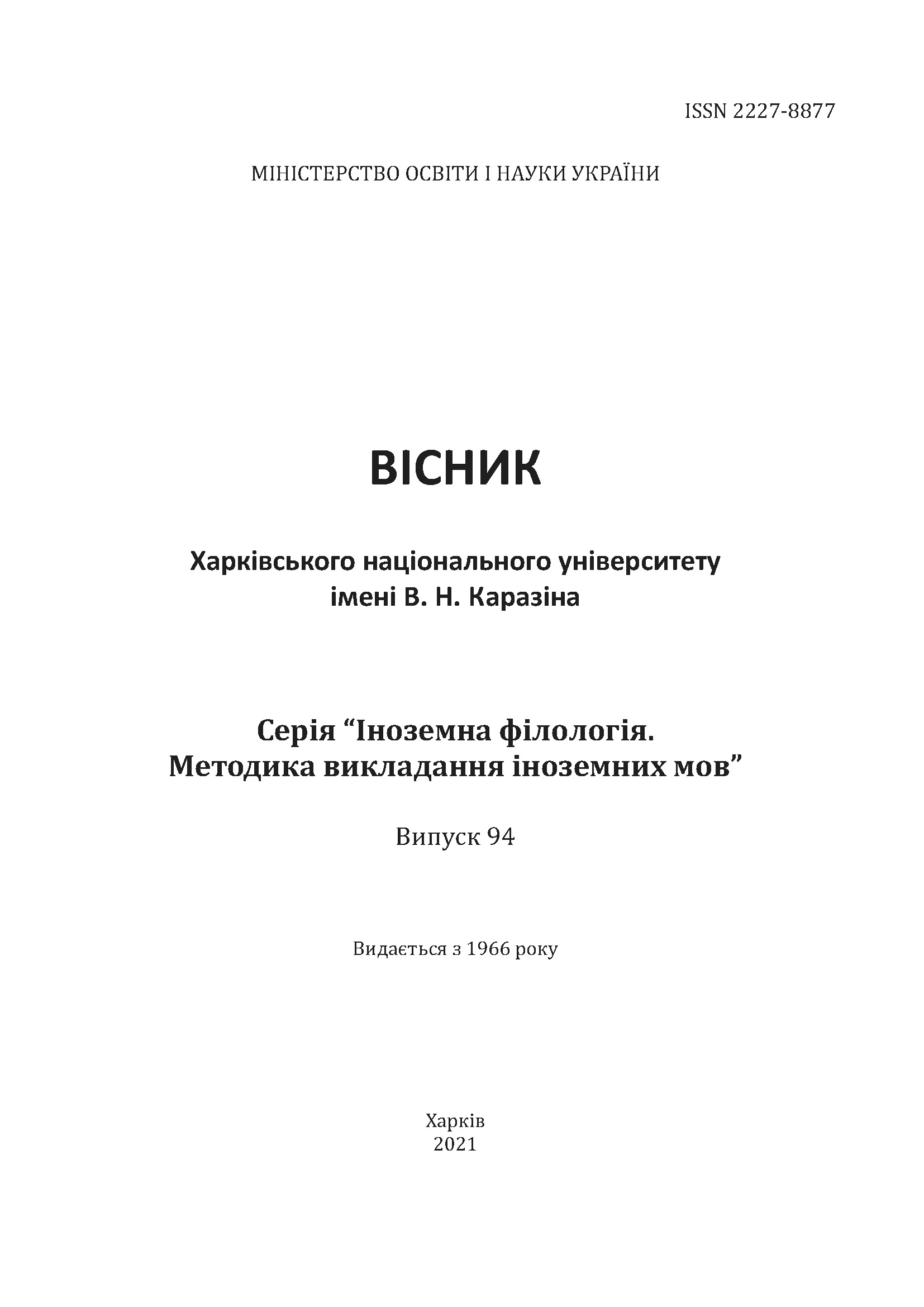Комунікативні стратегії персонального брендингу Марка Гемілла
Анотація
У статті розглядаються лінгвістичні аспекти персонального брендингу, досліджуються комунікативні стратегії та стилістичні засоби, які використовуються для створення, підтримки та просування особистого бренда знаменитості. Брендинг є незамінним інструментом сучасного маркетингу, і його фокус давно перемістився з компаній на бренди людей. Самобрендинг став важливим компонентом успішної публічної кар’єри, і його мовна реалізація набуває все більшої ваги. Значна частина онлайн-платформ і соціальних медіа вийшли за межі своїх початкових цілей і стали основними посередниками реалізації зусиль з персонального брендингу. У дослідженні аналізується діяльність Марка Гемілла у мережі Twitter у 2021 році та визначаються основні комунікативні стратегії, спрямовані на просування його особистого бренда. Результати свідчать про те, що стратегія встановлення зв’язку з цільовою аудиторією, стратегія прояву соціальної відповідальності, стратегія кар’єрного просування та стратегія створення відчуття ексклюзивності є основними комунікативними стратегіями персонального брендингу Марка Гемілла. Кожна з них встановлює або закріплює одну чи декілька рис, приписуваних актору, таким чином будуючи та зміцнюючи його особистий бренд. З іншого боку, усі комунікативні стратегії реалізуються через певні мовні та риторичні засоби, які полегшують їх реалізацію та сприяють досягненню бажаного ефекту на цільову аудиторію. У цьому дослідженні виявлено різні мовні та стилістичні засоби, що використовуються в персональному брендингу Марка Гемілла, а саме цитати, паралелізм, іронія, пародія, креолізований текст (хештеги, емодзі, великі літери, експресивна пунктуація, картинки, gif-файли, карикатури, відео), гіпертекст, слогани, віршовані рядки, риторичні запитання та кліше. Дослідження показало, що діяльність у мережі Twitter надзвичайно важлива для привернення уваги, створення бажаного образу та контакту з цільовою аудиторією, а, отже, ефективна з точки зору персонального брендингу.
Завантаження
Посилання
Herring, S. C., & Androutsopoulos, J. (2015). Computer-mediated discourse 2.0. In D. Tannen, H. E. Hamilton, & D. Schiffrin (Eds.), The handbook of discourse analysis (2nd ed.). 127–151. Retrieved from http://info.ils.indiana.edu/~herring/herring.androutsopoulos.2015.pdf
Horoshko, O., & Poliakova, T. (2018). Persuazyvnist u zhanri tvittinh v anhlomovnomu politychnomu dyskursi [Persuasiveness in the genre of English political discourse]. Psykholinhvistyka [Psycholinguistics], 24(2), 29–46. (in Ukrainian)
Page, R. (2012). The linguistics of self-branding and micro-celebrity in Twitter: The role of hashtags. Discourse and Communication, 6(2), 181–201.
Platonova I., Tarasova E., & Golubinskaya A. (2015). Creolized Text as a form of Modern Educational Discourse. Procedia – Social and Behavioral Sciences, 214, 788–796. https://doi.org/10.1016/j.sbspro.2015.11.719
Snelson, C. L. (2016). Qualitative and mixed methods social media research: A review of the literature. Journal of Qualitative Methods, 15(1). http://dx.doi.org/10.1177/1609406915624574
Thurlow, C., Lengel, L., & Tomic, A. (2004). Computer mediated communication: Social interaction and the Internet. London: Sage.
SOURCES OF ILLUSTRATIVE MATERIAL
Hamill, M. Twitter account. Retrieved from https://twitter.com/hamillhimself




